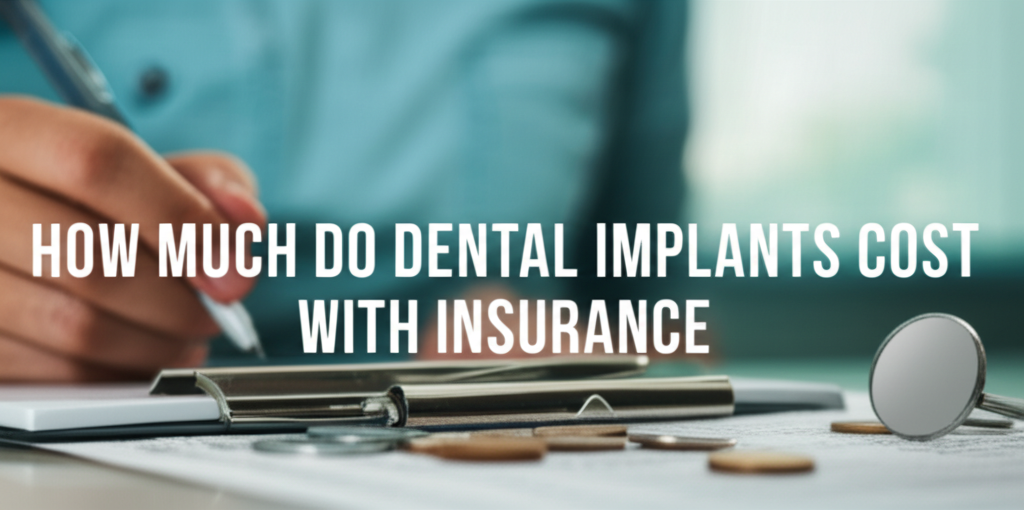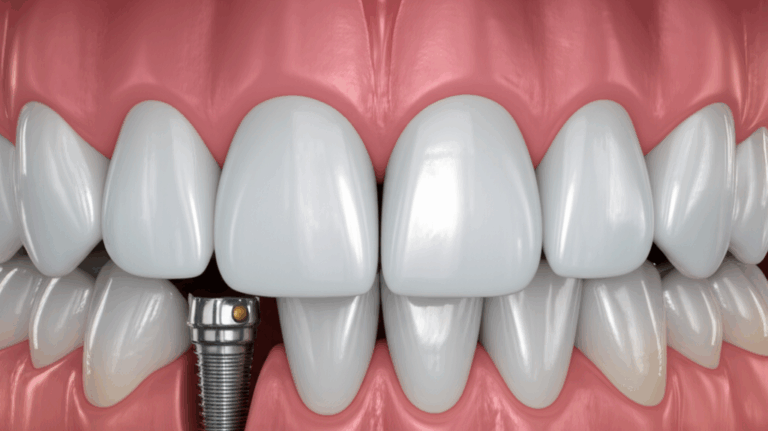
How Much Do Dental Implants Cost with Insurance in 2024? Your Simple Guide
Most people know dental implants are a strong, real-looking fix when you lose a tooth. But as soon as you check prices, one question comes up: How much do dental implants cost when you have insurance? If you’ve looked at numbers, the price can really surprise you—especially when the first price you see often doesn’t include everything. If you feel lost or worried about how much insurance will really pay, don’t stress. You’re in the right place, and a lot of people have the same questions.
We’ll explain what your insurance truly helps with, what you need to pay yourself, and how you can save money. We’ll point out hidden extra costs, walk you through simple steps, and help you see if dental implants are a good idea for your smile—and your wallet.
In This Article
- What Do Dental Implants Really Cost (Before Insurance)?
- Will My Insurance Pay for Dental Implants?
- How Insurance Changes What You Pay (Examples)
- Extra and Hidden Costs You Might Not Expect
- How to Use Your Dental Insurance for Implants
- What if Insurance Doesn’t Cover Enough?
- Are Implants Worth It Over Time?
- Main Points and What To Do Next
The Real-Life Question: Are Dental Implants Even Possible for Me?
Let’s start with the big worry: “Is getting dental implants even an option with insurance?” Or maybe you’re thinking, “My insurance covers big dental work—does that mean all the parts of implants, or just the top piece?”
Here’s some simple good news—it’s smart to ask, and many people are in the same spot. Dental implants do cost a lot, but figuring out how insurance works can save you from surprise bills. By the end, you’ll know the right questions for your dentist and insurer, so you won’t feel lost or confused.
What Do Dental Implants Really Cost (Before Insurance)?
Let’s take a closer look at the “big number” you’ll see online or in your dentist’s office.
A. Single Dental Implant: What’s Involved?
Every implant has three main parts:
Average cost (before insurance): $3,000–$6,000 for one tooth
Implant post: $1,000–$3,000
Abutment: $300–$600
Crown: $1,000–$2,500
> Why is there such a big range?
> Costs change depending on your city, how much your dentist charges, and which materials you pick. A dentist in a big city will usually cost more than one in a small town. Better materials and extra steps (like needing more bone in your jaw) also increase the bill.
B. More Than One Implant or Full Sets
If you’re missing a lot of teeth and need a bigger fix, prices go up but the math is different:
- All-on-4 Implants: $15,000–$30,000 for one row of teeth
- Implant-Supported Dentures: $5,000–$15,000 for one row
> Here, you’re paying for a group of new teeth—like a bridge or denture held by a few implants—not one new tooth for every gap.
C. Other Things That Can Change the Cost
- Where you live – Big cities cost more.
- Which dentist you pick – Specialists cost more than a regular dentist.
- The type of material – Some metals cost more.
- Extra treatments – If you need bone grafts or other steps, that’s more money.
If you want to know how crowns are made, you might like reading about what happens in a digital dental lab.
Will My Insurance Pay for Dental Implants?
Here’s the main thing everyone wants to know: Does my dental insurance help with the cost of implants, and how much?
A. The Usual Answer: Yes, But Only Partly
Most dental plans call implants “major” dental work. That usually means:
- Partial help: Insurance might pay for 10–50% of the cost, but often it’s closer to 20–30%.
- Never the whole thing: Don’t hope for 100% coverage—not even for the top part (the crown).
B. Why Doesn’t Insurance Pay More?
Insurers often say implants are “cosmetic” or “not really needed,” and may suggest a denture or bridge instead. Still, more plans will now pay some implant costs—but only partly.
Rules in your insurance that change things:
- Yearly limits: Most plans won’t pay more than $1,000–$2,000 each year. Implants can use that up fast!
- Deductible: You pay the first $50–$200 each year before insurance kicks in.
- Co-insurance: You pay a certain percent (often 50%) of big treatments.
- Waiting times: New plans might not let you get big procedures for 6–12 months.
- Pre-existing rules: Some plans won’t pay if you lost the tooth before getting the insurance.
- Medical vs Dental: Sometimes, if you lost teeth from an accident, medical insurance might help for certain steps.
Tip: Always check the details in your insurance plan or call them directly. Ask about what’s not included and about “missing tooth” rules.
How Insurance Changes What You Pay (With Simple Examples)
Here’s where we do some math (but don’t worry—it’s not hard!). Let’s use a common example so you can see what you would really pay.
Example:
You need one dental implant. The full price is $4,500.
Your insurance looks like this:
- Yearly limit: $1,500
- Deductible: $100
- Coinsurance for implants: 50%
- No waiting
- No “missing tooth” rule
How much do you pay from your own pocket?
Step by step:
Total you pay:
$100 (deductible) + $700 (half of what insurance covers) + $3,000 (the part over the limit) = $3,800
Insurance pays:
Just $700, even though they said they’d cover “half.”
> Why is it so little?
> Most plans’ low yearly limit means you get very little help—not just for implants, but even for regular checkups. If you need two implants (or a full set), you pay even more yourself.
If you want to guess your own costs, some dentists use a “dental implant cost calculator with insurance” on their websites. But always ask your dentist and your insurance to be sure.
Extra and Hidden Costs You Might Not Expect
Dental implants are almost never “just one step.” Most people need extra work first—and not all of it is covered by insurance:
A. Extra Procedures (How Much They Cost)
- Tooth Pulling (Extraction): $75–$600 for each tooth
- Bone Grafts: $200–$3,000 for each area
(Needed if your jawbone isn’t strong enough; insurance usually doesn’t pay.)
- Sinus Lift: $1,500–$3,000
(Needed for implants in the upper jaw where bone is thin.)
B. Tests and Appointments
- X-rays or Big Pictures: Sometimes paid by insurance, sometimes not.
- CT Scan: $150–$500; helps the dentist plan, may only be partly paid.
C. Other Usual Fees
- Sedation or Medicine: $250–$1,000+; needed for long or hard procedures.
- Temporary Tooth: $150–$500; this fills the gap before your real new tooth is done.
- Medicine afterwards: You might need to pay for antibiotics or pain meds.
D. Why Doesn’t Insurance Pay For All This?
Insurance companies often say some steps are “not really needed” or just “preparation.” For example, bone grafts might not be paid for, even though you need them before you can get the implant.
You should always ask for a written, detailed plan from your dental surgeon. Then check with your insurance to see what they’ll pay for.
How to Use Your Dental Insurance for Implants
Insurance is tricky—but here are some smart ways to get more from your plan:
A. Plan Your Timing
- Split up your treatment: If you can, start some steps at the end of one insurance year, then do the rest the next year to use the yearly limit twice.
- Start early: If your plan makes you wait for big procedures, start soon—waiting months adds up.
B. Pick the Right Dentist
- In-network saves money: Insurance will pay more if your dentist works with them. If not, you’ll pay more.
C. Ask If You’re Denied
If insurance says no, try again with your dentist’s help—especially if you need the implant after an injury or health problem.
D. Use FSA or HSA Money
- FSA/HSA: These are special accounts you put money in before taxes, for health or dental needs—including implants.
- Tip: FSA money often disappears at the end of the year, so check your deadline.
E. Double-check Everything
- Pre-approval: Have your dentist ask your insurance for a “what’s covered” note before you start.
- Get a copy: Always ask for things in writing—no one wants a surprise bill.
What if Insurance Doesn’t Cover Enough?
If you still have a big bill after insurance, there are other things you can try:
A. Dental Loans or Payment Plans
- CareCredit, LendingClub, and similar:
You can get a card or loan to pay over time, sometimes with little or no interest—if you qualify.
- But watch out: Read the fine print—some deals can cost more if you don’t pay on time.
B. Deals at the Dentist
- Some dentists let you pay over months or years, especially if you’ve gone there for a long time.
C. Discount Dental Plans
- These aren’t insurance, but they let you pay less (often 10–60% off) for work at certain offices.
D. Dental Schools
- Dental schools sometimes do implants for much less money. Students work with teachers watching, and you often pay half the usual price.
E. Dental Help Programs
- There are some grants, charity groups, and programs that give money for part of your cost—mostly if you have health problems or low income.
F. Getting Work Done Overseas
- Some people travel to other countries for dental work because it’s cheaper.
But: Think about travel costs, missing work, and what happens if there are problems. Big savings can also mean bigger risks.
Are Implants Worth It Over Time? (Compared to Bridges or Dentures)
You might be asking, Are dental implants worth the big cost, or should I get a cheaper fix like a bridge or dentures? Here’s a quick list:
Why Dental Implants Are Great
- Lasts a Long Time: Implants can work for life if you care for them. Bridges and dentures usually need fixing or replacing every 5–10 years.
- Don’t Move: No slipping or breaking. Implants feel almost like your real teeth.
- Good for Jawbone: Implants keep your jaw strong, so you don’t end up with a sunken look.
- No Damage to Other Teeth: Unlike bridges, implants stand alone.
Not-So-Good Things About Implants
- Price: Costs more at the start, and insurance doesn’t help much.
- Not for everyone: You need strong jaw and healthy gums. Smoking or some health problems can make implants risky.
- Takes longer: Sometimes it takes months, especially if you need more bone first.
What About Bridges and Dentures?
- Cheaper at first; insurance covers more.
- Faster to get done.
- Good for some people, especially if you can’t get implants.
- But: Can affect nearby teeth, come loose, break, and don’t keep your jawbone strong.
For more about fake teeth options, see what’s new in a removable denture lab.
Who Can Get Dental Implants?
— If you are healthy enough for a normal tooth pull
— No gum disease
— Enough jawbone (or you can get more bone added)
— You don’t smoke, or can stop for a while
— No serious diseases or meds that slow bone healing
If you’re missing lots of teeth or have loose dentures, you might be a good fit for “full mouth” implant options—ask your dentist!
Main Points and What To Do Next
Here’s your quick list:
Top Things To Know:
- Dental implants cost $3,000–$6,000 for each tooth (before insurance).
- Insurance helps a bit—usually 10–50%, but mostly only up to the yearly limit.
- Watch for extra costs: bone grafts, scans, tooth pulls, and temp teeth often aren’t included!
- Breaking up your treatment, fighting denials, and using FSA/HSA money can help.
- Loans, payment plans, dental schools, and grants can help if you still need more money.
- Implants are a smart way to feel good and eat better—but only if you can make the money work.
What now?
Bottom line:
A dental implant is a big deal, but if you ask the right questions and plan smart, it can be one of the best choices for your health and your happiness. Your first step? Book a simple talk with your dentist and bring your insurance card. You can do this!
Are you interested in the different kinds of crowns or bridges that work with implants? Check out a dental ceramics lab for choices on what material to use, or read more at an implant dental laboratory.
Still looking into ways to replace teeth? Learn about the good and bad sides in our guide to dental implant solutions.
This guide is for learning only. For real dental advice or an exact price, talk to your dentist or insurance. Your smile, your choice—make it with confidence!








